Buds, Buds and Buds
Let’s talk about Buds. Or, if you prefer, Budz. Either way we’re referring to the best part of the cannabis plant, the fully mature and ready to smoke flower, a.k.a. Buds.
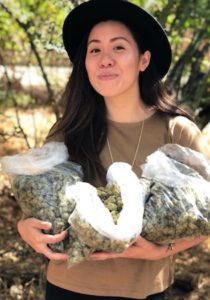 As in: got any buds? Or, Get your budz here! Sometimes there’s nothing more glorious than bags of weed all lined up and ready to go. A big bag of marijuana is one of the most amazing things to behold!
As in: got any buds? Or, Get your budz here! Sometimes there’s nothing more glorious than bags of weed all lined up and ready to go. A big bag of marijuana is one of the most amazing things to behold!
Bagging weed for sale has changed over the years; in the past a triple-beam scale, a plastic baggie and some weed was all you needed. Post-legalization, the process for bagging up weed is a much more controlled process, requiring a technician to log a large container of cannabis out of the inventory system and then, in a clean-room environment, transferring the cannabis from the master container to child-proof containers or into containers which can then be sealed child-proof.
And, of course, it’s much more expensive to package cannabis post-legalization than it was in the bad old days. Let’s talk a bit more about Buds. Please refer to this graphic from Leafy to better understand the anatomy of the cannabis plant. 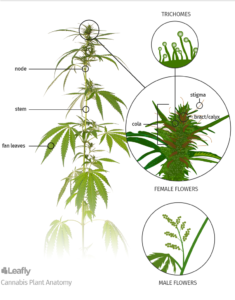
Cannabis Plant Anatomy
Cannabis buds will form at most of the plant’s nodes. A node is where a leaf or branch grows off the stalk. The larger the plant grows, the more nodes will appear, which means your plant will have more locations where buds can grow.
Many novice growers, as well as more experienced ones, struggle with the quality of their weed buds. The plant might grow fantastically, but it just doesn't always seem to produce the most desired results.
The following list highlights several cannabis tips which can help you improve the quality of your buds.
Source Quality Cannabis Seeds or Clone Starts
Get to work and do some research on your options: seeds versus clones. For seeds Source from a reputable seller/broker who has:
- Genetically stable seeds
- Feminized Seeds
- Auto-Flowering Seeds
For Clones, it’s the same principle, you’re just looking for the Clone Starter to have the same qualities as listed above.
Grow Room Conditions
Grow Room conditions are critical to ensuring the success of your crop. The correct lighting configuration, air circulations, temperature and humidity are all mission critical. Remember, you’re trying to re-create the ‘great outdoors’ inside the space you’ve constructed as your grow room.
Provide the Proper Nutrients
You need to give it the right amount for each growth stage, especially when it's flowering. During the flowering stage, make sure that the nutrients are low on nitrogen but rich in phosphorus and potassium.
Provide Support for the Plants
This means: either put tomato cages around your plants or rig up a plastic netting arrangement which provides places for your plants branches to grow through and rest on … this allows them to “get a break” when those buds start fattening up and adding water weight.
Harvest at the Right Time
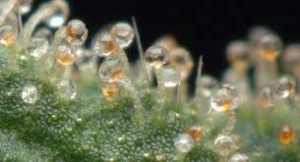 The whole thing about harvesting is that it’s both science and art. The science is that the plants life cycle is a fixed number of days, so, you pretty much know when they’re entering their final phase. However, the way to measure “ripeness” is to examine the trichomes on your plant.
The whole thing about harvesting is that it’s both science and art. The science is that the plants life cycle is a fixed number of days, so, you pretty much know when they’re entering their final phase. However, the way to measure “ripeness” is to examine the trichomes on your plant.
They should be standing erect with a drop of resin at the tip. The resin should have gone from a clear, transparent state to a golden or amber color state. When you see this, your plants are ready to be harvested and then cured!
Curing Your Buds
The next next stage, and arguably the most important, is the current stage. It’s in the curing process where all the terpenes get expressed and your cannabis matures into the dank you’re looking for.
To cure you need a dark room which has a constant 60 degree temperature and a 60 percent humidity. Use a dehumidifier if you have too. The curing should take between 12 and 14 days. Too fast and the weed won’t have all it’s flavor profile and too slow and the weed could get moldy.
You’ll know it’s ready when you can “snap” a bud off it’s branch and it breaks cleanly …congratulations! Now, all you gotta do is Trim it.
It’s a Lot of Work to Grow Buds
As you can tell by reviewing the short list above, it takes a lot of work to grow ‘dank’ buds. Of course, if you live in a legal state then it’s really easy to just go to the dispensary and purchase the budz of your choice!
If you’ve never been to a retailer, then just remember, at first glance, the cannabis you want should make you wish you already had a joint of it rolled up or a bowl packed. This is the weed that you’ll find on most cannabis Instagram pages. The green will pop through all the juicy trichomes. The buds should look like they were just removed from the plant, even though they have been drying and curing for the past few of weeks.
When you’ve got that kind of cannabis in hand, you’re ready to have yourself a real good time!
To learn more about cannabis, and get up close to cannabis plants, Book a Happy Travelers Tour today!
To learn more about the terms: bag of cannabis, bag full of weed, bag of bud and bag sizes of weed visit our blog post https://happytravelersweedtours.com/weed-measurements-weights-and-amounts/
Cannabis Strains for Pain Management
Best cannabis strains for pain management
Cannabis and Pain Management has been a controversial subject for decades. Without Federal approval, the United States has only been able to conduct limited clinical studies, so, most reports are built on anecdotal stories from users, as opposed to controlled scientific programs.
Studies have been conducted abroad, however, a more concerted and focused effort will need to occur in order for the body of science to grow. In the meantime, the internet can be used to source the limited amount of information which is available.
The classic "measurement" for pain management is: what are the percentages of THC and CBD in the flower (or oil or edible)?
However, there are a few things that you will want to consider outside of simple percentage CBD and THC. One of these considerations is the ‘type’ of cannabis you are purchasing.
There are three categories that your medical marijuana can fall into:
- Indica
- Sativa
- Hybrid (a mixture of both indica and sativa)
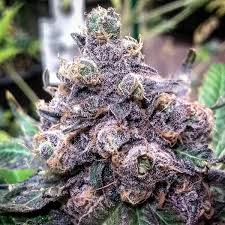 While this is not an exact science, users tend to report more effective pain-relieving properties with indicas. In one survey, participants reported that indicas helped more than sativas when it came to headaches, joint pain, neuropathy, and spasticity. Users also reported indicas to be more helpful when it comes to sleep and sedation.
While this is not an exact science, users tend to report more effective pain-relieving properties with indicas. In one survey, participants reported that indicas helped more than sativas when it came to headaches, joint pain, neuropathy, and spasticity. Users also reported indicas to be more helpful when it comes to sleep and sedation.
Lastly, there are countless user reports on specific strains of weed that have been found to be powerful for relieving pain. While some of these strains are high CBD, indica strains, some strains of weed used for pain do not fall into this category.
Some of the most renowned pain-relieving strains (per user reviews) include:
| Strain | Category | CBD Content | THC Content | Description |
| ACDC | Hybrid | High | Low | Produces no noticeable high feeling due to very low THC content. Helps to relieve pain and even control stress. |
| Purple Kush | Indica dominant hybrid | Low | High | Produces a strong body high with associated reductions in pain. A very relaxed and sleepy high. |
| Harlequin | Mostly Sativa | High | High | Mellow psychoactive effects that are great for pain relief experienced with menstrual cramps and arthritis. |
CBD oil for pain
Whether you live in a state where medical marijuana is not available, or you would like pain relief without any “high” feeling, CBD oil may be a good option for you.
When it comes to CBD only studies, the majority are preclinical or animal studies. There are limited studies examining the effect of CBD alone on pain in humans. Most of the studies out there examine the benefits of THC and CBD together, or whole Cannabis sativa plant, for pain. That said, the research conducted thus far, along with countless user reports, suggests that CBD itself may be able to help relieve pain.
Activation of cannabinoid receptors has been linked to the inhibition of pain. The exact mechanisms of action are still being researched, however, CBD has been found to increase the levels of endocannabinoids in the body, specifically anandamide. It is plausible that this increase in endogenous endocannabinoids could have an impact on pain.
Here we will examine the limited scientific evidence, along with theories relating to the use of CBD for pain.
| CBD Oil Application | Description |
|---|---|
| CBD Oil for Nerve Pain | Neuropathic pain, also known as nerve pain, is a unique type of pain that is caused by injured, dysfunctional, or irritated nerves. This pain tends to be chronic and severe, and with no known cure or remedy, every individual is left to try numerous strategies to find something that works for them. Some of the most common sources of neuropathy include diabetes, injury, cancer, infections, alcoholism, and autoimmune disorders. While there have been human clinical trials that support the benefits of THC and CBD for nerve pain, there have been fewer studies examining just CBD. In an animal study, researchers found that oral supplementation of CBD led to improvements in neuropathic pain in rats. |
| CBD Oil for Back Pain | Back pain is one of the most common forms of both acute and chronic pain. Acute back pain tends to be caused by an injury, such as by falling or lifting something heavy. Chronic back painis that which lasts more than three months and is often caused by a ruptured or bulging disc, arthritis, osteoporosis, scoliosis, or nerve pain. Some back pain is partly caused by inflammation, and numerous preclinical and animal studies have found benefits of CBD for inflammation. Through possible reductions in both nerve and inflammatory pain, CBD may help relieve back pain. |
| CBD Lotion for Pain | When it comes to localized pain, topical CBD lotion or creams may be a great option. By applying the CBD directly to problem areas, concentrated CBD is delivered to exactly where you need it the most. While human studies on the efficacy of CBD lotion are lacking, there are plenty of animal studies and personal accounts to support this use. In one study, researchers found that rats with arthritis treated with transdermal CBD experienced reductions in pain-related behaviors and inflammation. |
Dosage amounts of cannabis and CBD for pain
Cannabis and CBD dosing for pain are highly individual. Studies have found a bell-shaped dose-response curve with cannabis extract, meaning that it slowly becomes more effective until it hits a certain point, and then the effectiveness decreases. To further complicate matters, the effective dose found in human studies varies greatly from one condition and one study to the next.
For example:
- in migraines, the effective dose of THC and CBD was found to be 200 mg/day, with no benefits found at 100 mg/day.
- however, doses of Sativex, an oral spray that delivers 2.7 mg THC and 2.5 mg CBD per spray, was found to be effective in the treatment of central neuropathic pain in Multiple Sclerosis at doses of around 20-30 mg/day CBD + 22-32 mg/day THC.
CBD dosage for pain has not been examined in any human studies. Like the Cannabis sativa extract, studies have found that exceeding the optimal dose of CBD can lead to a reduction in efficacy. In a study examining the effect of CBD on anxiety, 100 mg and 900 mg were not effective, where 300 mg was.
So where, then, should you start when it comes to dosing Cannabis sativa or CBD oil? Follow these steps when adding in a cannabis or CBD oil product:
- Choose the product that you would like to take
- Start at the lowest recommended dosage
- Split this dose between 2-3 doses throughout the day
- Stay at the same dose for 3 or more days and see how you feel
- Increase your dose until you find the best dose for you
Cannabis sativa is good for pain
Studies and anecdotal reports have shown that cannabis is good for pain. There are numerous products available for you to use if you live in a state where pot is legal. Some products that may help if you want something other than bud itself include:
- Lotions or creams
- Tinctures (dropper bottles with cannabis-infused oils)
- Capsules or pills
- Edibles (chocolates, candies, teas, or other foods infused with cannabis)
Here is a table of various cannabis strains for pain management:
| HELPS WITH - | STRAIN | DESCRIPTION | EFFECT |
|---|---|---|---|
| General Pain | ACDC | All hail ACDC, one of the most effective painkilling strains out there due to its one-two punch of cannabinoids CBD and THC. As a general rule, cannabis strains with high amounts of both THC and CBD tend to make the best pain medicines, and there are plenty of high-CBD strains out there offering similar chemical profiles as ACDC. | Relaxed Focused Uplifted Euphoric Happy |
| Blackberry Kush | Blackberry Kush is a heavy THC-dominant strain that wraps the mind in dreamy, blissful euphoria while lifting pain from the body. With the exhale of its sweet, berry flavors, it’s easy to sink into a new mindset—one that isn’t dominated by throbbing aches and pains. | Lazy Euphoric Sleepy Happy Creative |
|
| Inflammation and Arthritis | Harlequin | Looking for cannabis that will quiet the roar of pain without a foggy mind? Try out the high-CBD strain, Harlequin. Its uplifting and clear-headed effects set it apart from heavier, more intoxicating options and make it a perfect choice for daytime medicating. | Happy Euphoric Focused Uplifted Energetic |
| Blue Widow | Blue Widow is a prolific hybrid cross between parent strains Blueberry and White Widow. Leafly reviewers praise Blue Widow for its anti-inflammatory qualities, and perhaps the reason for this is Blue Widow’s rich terpene profile that typically boasts high levels of caryophyllene alongside a hearty cannabinoid content. | Anxiety Stress Pain Depression Insomnia |
|
| Headaches and Migraines | Purple Arrow | Purple Arrow hits the target somewhere between heavy pain relief and uplifting euphoria, making it a great choice for headache sufferers needing swift relief without overly sedating effects. | Euphoric Happy Uplifted Lazy Giggly |
| Blueberry Headband | Headband hybrids are commonly described as “cerebral” with effects that go straight to the crown of your head. Blueberry Headband lives up to its name, delivering focused headache relief and a sweet berry flavor. | Happy Relaxed Uplifted Euphoric Talkative |
|
| Cramps | Redwood Kush | With effects that relax tension in both mind and body, Redwood Kush is known to deliver a woody forest aroma alongside hefty amounts of THC to help ease muscle cramping. | Euphoric Happy Uplifted Creative Lazy |
| Dynamite | Dynamite is another high-THC strain that blows pain and cramping out of the water, but be wary: Dynamite is also known to incite the power of the munchies. | Euphoric Lazy Sleepy Happy Uplifted |
|
| Spinal Injury Pain | Cataract Kush | Cataract Kush is a heavy-hitting hybrid cross between powerhouse classics LA Confidentialand OG Kush. This strain’s potency may not be for the novice consumer, but it’s perfect for patients needing a strain that can expertly annihilate pain associated with spinal injury. | Lazy Euphoric Happy Hungry Sleepy |
| Maza Sharif | Descending from some of the earliest landraces of Afghanistan, Mazar I Sharif is a relentless painkiller with a potency you can see on her heavy blanket of crystal trichomes. Afghani strains have a reputation for their high cannabinoid contents, so it isn’t hard to imagine that so many patients have found relief from stubborn pain in Mazar. | Lazy Euphoric Hungry Sleepy Creative |
To learn more, Book a Happy Travelers Wine-and-Weed Tour today!
Vape Pens
Vape Pens. What are they and how do they work? What's the difference between disposable vape pens and a battery with pre filled vape cartridges? What's a concentrate vape pen and how is it different than a bud vaporizer?
We're going to answer these questions and provide information about "best of's" in this blog post all about Vape Pens!
How Do Vape Pens Work?
 Let's take a peek under the hood with some help of the good folks at TheCannabist:
Let's take a peek under the hood with some help of the good folks at TheCannabist:
1. The tank
The cannabis oil holder is usually called a tank if refillable, or cartridge if it’s intended for single-use. It’s also typically combined with the atomizer as a single unit. Tanks are usually polycarbonate plastic, but glass and stainless steel tanks can also be found.
2. The atomizer
The little heater in a vape pen is called an atomizer. Fancier versions are called cartomizers, clearomizers or other new jargon, but they are still atomizers at heart — that pint-size heating element converts liquid to tiny airborne droplets. Atomizing is what we should really call vaping, but that’s a lost cause for sure.
If you dab a bit of oil on the heating element, that product will likely be labeled an atomizer. Surround the atomizer with polyfill material to keep it saturated with oil from a separate tank and it’s a cartomizer. Drip the oil from a separate tank onto the atomizer using a silica wick and it’s a clearomizer. The wick can be swapped for cotton, steel mesh, or other “premium” materials.
3. The sensors and software
Some vape pens automatically turn on when the user inhales through it, while others use a push button to toggle the heating element. Both of these methods require sensors to determine when the user is inhaling or button-pushing. Embedded software controls the various pen parts.
4. The battery
Vape pen batteries must provide enough current to power a tiny heater that reaches 400 degrees in mere seconds. So, just like your cell phones and other power-hungry devices, vape pens use rechargeable lithium ion batteries, which have high energy density. They also have a very small chance of exploding if improperly charged.
Disposable Vape Pens vs a Battery Pack with Vape Cartridges
Starting with disposable vape pens, the first issue is how do you correctly dispose of it? They ARE really convenient and reasonably priced, what could be the problem? The issues with these pens focuses on two component parts:
- the battery
- the residue or remaining concentrate
The challenges are the batteries aren't typically easily recyclable because they're part of the chassis of the disposable vape pen and the residue or remaining concentrate is considered - are you ready - a hazardous material.
While you can't throw vape pens and batteries into the recycling for curbside pickup, they can still be recycled through the right facilities. The easiest way to ensure your old vape pens and batteries are disposed of properly is to bring them to your local Hazardous Materials Management Facility (HMMF).
On the other hand, Vape Pen Batteries are units which contain a rechargeable battery to which the user attaches a vape pen concentrate cartridge. The cartridges however still present a problem, specifically due to any residue left in the cartridge.
You might wonder, why can’t cannabis oil cartridges be recycled after use? Vape pens and their cartridges are made up of many different materials in minuscule quantities. Because of the complexity of these products, traditional recycling facilities have no method to extract the desired resources.
Dealing with spent cartridges is a specialized field. Anytime you want to recycle something as unique and complex as a vape cartridge, you need a large quantity that can sustain the business offering the service.
With no shortage of cartridges, this brings us to the second problem: Why can’t we collect vape cartridges? When states began to transition to legal markets, regulations were put in place to deter illegal resale activity. The fear was that items like cartridges would be collected and trace amounts of cannabis oils could be extracted to produce an unregulated black market product. Because of this, it is illegal for businesses to allow for drop-off bins for cartridges.
So - what's a conscientious consumer to do? It seems the most appropriate path to take is to find a Battery system which you like, purchase the vape pen concentrate or oil you like and recycle those used cartridges at your local HMMF location.
Or - you could use a Dried Herb Vaporizer. Let's Discuss!
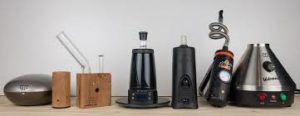 If you decide that using a vaporizer for dry herbs is the right choice for you, you'll quickly find there are several different types to choose from.
If you decide that using a vaporizer for dry herbs is the right choice for you, you'll quickly find there are several different types to choose from.
- The most common type is a portable vaporizer, which allows you bring your vape with you just about anywhere you go. Portable dry herb vaporizers come in all different shapes and sizes, so you will have plenty of options to choose from including many that are incredibly discreet.
- If you plan on enjoying your herbs at home, you should look into purchasing a desktop vaporizer. These units are usually much larger in size and often more expensive. However, they are capable of producing the best quality vapor and are generally built to last longer.
- The last type to consider is a dry herb vaporizer pen, which is usually the least expensive and is considered the lowest quality. A vaporizer pen for dry herb is basically a portable vape that is shaped like a pen and resembles an E-cigarette closely. It is important to note that these types of units typically have a dry herb heating chamber where a heating coil is utilized in order to heat the herbs. Unfortunately, this type of heating mechanism actually burns the material rather then vaping it. Therefore, it is very important that you spend time researching the device to ensure it functions as a true vaporizer before buying one.
For your convenience, we've pulled together information about the "Best Vape Pens" and present it to you here in this convenient chart:
| Vape Pen Category | Place | Name | Rating (1 to 10) |
|---|---|---|---|
| Best Weed Vape Pens for THC Oils | 1st | Kandypens Special-K | 9.6 |
| 2nd | PCKT One Plus | 9.6 | |
| 3rd | O-Pen Vape | 9.2 | |
| Best CBD Vape Pens | 1st | CBDfx Terpenes Vape Pen | 9.6 |
| 2nd | CBDfx Vape Pen | 9.5 | |
| 3rd | Hemp Bombs Disposable | 9.4 | |
| Best 510 Thread Batteries | 1st | Kandypens Special-K | 9.6 |
| 2nd | PCK one Plus | 9.6 | |
| 3rd | Mig Vapor Migi Pro | 9.4 | |
| Best E-Liquid Pens | 1st | Freemax Twister 80W | 9.4 |
| 2nd | Innokin Plexar | 9.3 | |
| 3rd | SMOK Stick V9 Max | 9.2 | |
| Best Dab Pens | 1st | Kandypens Crystal | 9.7 |
| 2nd | Kandypens Prism | 9.6 | |
| 3rd | Mig Vapor Wasp | 9.5 |
If you'd like to learn more about cannabis culture, cannabis production and the convergence of wine and weed consider Booking a Happy Travelers Tours Wine-and-Weed Tour!
Cannabis Tourism in Sonoma County
Here at Happy Travelers Tours we’re proud of our Tours, Itineraries and Leadership Position as Sonoma County’s premier educational cannabis tour. We’re also not the only Tour based here. In fact, Cannabis Tourism in Sonoma County is thriving!
Before we zoom in on Cannabis Tourism in Sonoma County, let’s back up a bit and look at the state of Cannabis Tourism in the State of California.
Cannabis Tourism in California
First, there are several Tour Companies operating up-and-down the state, primarily in these areas:
- San Diego and Los Angeles
- Oakland and San Francisco
- Sonoma County and Napa County
- Mendocino, Humboldt and Trinity Counties
There’s not too much in the Central Valley or Sierra’s (yet), however, the opportunities for cannabis tourism in the central part of California is limited by local rules and regulations. In fact, most of the State of California is a “pot desert”.
Per Marijuana Biz Daily “Two-thirds of California municipalities prohibit marijuana businesses from setting up shop, underscoring the hurdles MJ entrepreneurs face in trying to break into the world’s largest legal cannabis market.”
The state remains a patchwork of regulations and rules, with most local jurisdictions choosing to implement their own regulatory schemes on top of state rules, so, local permits on top of state permits.
According to data from CannaRegs, a website that tracks local marijuana rule developments in the state, only 161 of California’s 482 municipalities and 24 of the 58 counties have opted to allow commercial cannabis activity of any sort.
The State has allowed the delivery of medical cannabis for many years, however, when Cannabis was legalized in the State, communities were allowed to decide, on the local level, whether or not to allow Dispensaries to operate within their boundaries.
Different Types of Cannabis Tours
Second, there are several different types of bus tours being offered, including:
- Party Buses:
- The Way It Works: You bring the stash
- What to Expect: The bus is heading to dispensaries and processing facilities and, depending on which tour you’re on, wineries or breweries
- What’s the Day Like: Party On!
- Variety Tours:
- The Way It Works: The Tour is going to visit a variety of locations
- What To Expect: On-and-Off the Bus to View/Visit
- Dispensaries, Indoor Grow Facilities and Paraphernalia retailers
- Breweries, Wineries and Dispensaries
- Dispensaries, Manufacturing Facilities and Indoor Grows
- What the Day Like: Interesting, Lots of Bus Time
- Educational Tours:
- The Way It Works: The Tour Experience focuses on educating Guests on the benefits on cannabis and works to de-stigmatize both consumption and the cannabis consumer
- What To Expect: Get Close to the Plants, Learn About Cannabis and Cannabis production from professionals and have fun!
- What the Day is Like: Adventurous, educational and nature oriented.
Lots of Rules and Regulations
Third, even though cannabis is legal in the state of California, each county and all municipalities can (and do) have separate rules and regulations in force which impact how Cannabis Tours can operate.
Cannabis Tourism in Sonoma County
According to the Sonoma Valley News, there are four Tours Operators offering Cannabis Tourism in Sonoma County as of June, 2019:
| TOUR OPERATOR | LOGO | DESCRIPTION |
|---|---|---|
| Emerald Tours |  | Many tours originates in San Francisco, they have cannabis-infused “cruises”, seed-to-sale tours, and a farm tour. |
| Happy Travelers Tours |  | Caters to groups and specializes in “Wine and Weed Tours” and de-stigmatizing cannabis consumption and use. Tours originate in the Cities of Sonoma, Santa Rosa, Napa and by arrangement. |
| The Sonoma County Experience | 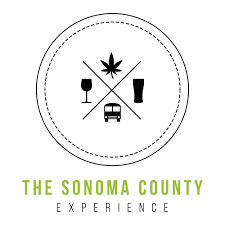 | Most tours start in San Francisco and takes folks to a Sonoma County dispensary, brewery and winery. |
| Wine Country Weed Trips | 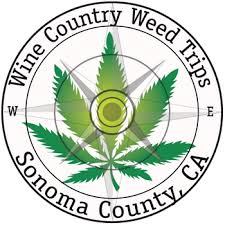 | This a designated-driver operation which picks up folks at hotels in the city of Santa Rosa and takes them to a dispensary and then either a Sonoma County winery or brewery, depending on guest preferences. |
Of course, there are other types of Marijuana Tours and Activities besides Bus Tours. The research we’ve been doing at Happy Travelers Tours has shown us several other ways in which cannabis tourism is flourishing.
There are:
- Walking Tours of historic places in San Francisco which focus on smoking weed
- Activities like “Puff Puff Paint” where you bring your own cannabis (BYOC) and spend an evening smoking and painting
- Indoor Grow and Processing Tours where you can visit cannabis manufacturing facilities where they grow indoor weed as well as process marijuana into various consumables
- Membership Events, like the Glowing Goddess Getaway, which takes Guests on a weekend long “Glamping” experience which focuses on all things Cannabis
- Food and Cannabis Pairings/Infused Meal events where participants eat cannabis (both THC and CBD) infused foods and/or sample different foods while pairing with different types of cannabis
- Cannabis-friendly Resorts and/or Home Rentals are also gaining popularity as destinations where you can hang out and smoke curated menu choices of artesian cannabis
It’s clear Cannabis Tourism in Sonoma County, and the State of California, is here to stay and not only is 2019 going to be a banner year, the momentum building for 2020 portends great things!
Book your Happy Travelers Tours educational adventure today! Our Wine-and-Weed Tour is our Top Rated Experience! Call 707-386-9859 or email [email protected] for more information.
Kush, Blue Cheese and Alaska Thunder Fuck!
Kush, Blue Cheese and Alaska Thunder Fuck - what in the world are we talking about? As most cannabis consumer know, cannabis strain names are often weird and random, just like these three examples.
What's in a Name?
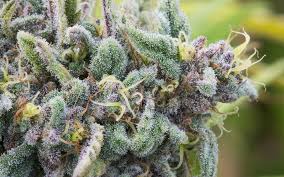
A question we get asked frequently on Tours is: who came up with this name? Since Happy Travelers Tours mission is to educate folks about cannabis and cannabis culture, we always try to find a "nice" way of explaining the seemingly un-connected way cannabis strains get named, but, we also recognize (and know) the majority of those names are created the way most people THINK they are - a bunch of stoned people sitting around sampling the stain and coming up with something to call it.
Hence: Kush. Or, Blue Cheese.
Strains, Terpenes and Flavonoids
There are many cannabis strains that vary widely in the composition of cannabinoids, terpenes, flavonoids, and other compounds. These components work synergistically to produce wide variations in benefits, side effects, and strain characteristics. Knowledge of the individual medicinal properties of the cannabinoids, terpenes, and flavonoids is necessary to cross-breed strains to obtain optimal standardized affect.
Indica, Sativa and Hybrids
Pssst! Are you looking for some 'pure Kush'? After generations of crossbreeding, it is now quite rare to find a pure Indica or pure Sativa strain.
It is now common for most strains of Cannabis to be Indica-dominant, Sativa-dominant or hybrid. As you may expect, different plant genetics can often lead to different medicinal effects.
Let’s start with Indica. Indica plants are typically shorter and have wide leaves. The buds of an Indica plant will usually be quite dense. You will typically find that Indica-based strains are more relaxing and will usually be associated with more bodily sensations.
These strains are often recommended for nighttime use due to these effects.
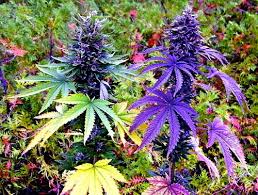
As for Sativa, these plants are typically taller with long and thin leaves. The buds of a Sativa plant are typically less dense and can be somewhat feathery. Sativa strains usually produce a cerebral feeling and are more uplifting and euphoric. As a result, they are recommended for daytime use.
A hybrid is a Cannabis plant that is a crossbreed between an Indica and a Sativa plant. Most strains of cannabis are a hybrid of these.
Top Strains of 2018 and 2019
Here is our chart of the top strains of 2018 and 2019. Our research took us to High Times, Leafly and other websites and we are excited to share what we've compiled.
| YEAR | STRAIN NAME | DESCRIPTION | AWARDS | GENETICS |
|---|---|---|---|---|
| 2018 | Mega Queso | The dense and sticky nuggets produce incredible concentrates, including a fantastic live resin with an intense terpene profile and appetite-stimulating potency. This sativa-dominant hybrid combines the best of both worlds for an overall buzz that’s both calming and uplifting at the same time. | 2016 SoCal Cannabis Cup | Hybrid |
| 2018 | Chem Scout | Great for treating insomnia and body pain, Chem Scout proves to be a unique indica-dominant variety that honors its roots while remaining contemporary. | First Place Indica Flower 2014 NorCal Cannabis Cup | Indica |
| 2018 | Manderin Cookies | This indica-dominant feminized Mandarin Cookies, a cross between Mandarin Sunset and Forum Cut Cookies, tastes like a Creamsicle and tests out at over 30 percent THC! Growers love the short flowering time and high calyx-to-leaf ratio, while connoisseurs appreciate the grapefruit citrus terps combined with the rich and earthy undertones. | Mandarin Cookies' tasty terpene profile has won multiple concentrate awards. | Indica |
| 2018 | Franco's Lemon Cheese | This cross of two strains—Super Lemon Haze and the famous Exodus Cheese (from the UK). This hybrid is fast-hitting and long-lasting and it grows very fast. | High Times Top-10 Strains of 2018 | Sativa |
| 2018 | French Cookies | Brightly glistening flowers are contrasted by dark-colored purple leaves, some looking almost black in appearance. French Cookies tastes spicy with a hint of grape and yields well for a Cookie strain. | High Times Top-10 Strains of 2018 | Sativa |
| 2018 | Rosetta Stone XX | This cross of Jack Herer and Cinderella 99 retained the beloved spicy sandalwood aroma and musky flavor of the Jack, but added resin production, stability and yield while reducing flowering time. | High Times Top-10 Strains of 2018 | Hybrid |
| 2018 | Green Crack CBD | Green Crack CBD tests at over 12 percent CBD and 6 percent THC for a two-to-one CBD/THC ratio. The effects are euphoric—a lasting happy feeling of well-being, perfect for daytime use or for patients with a lower tolerance seeking relief from migraines or anxiety. | High Times Top-10 Strains of 2018 | CBD |
| 2018 | Kush Mountains | She’s a cross between the super-frosty White Walker OG and Blue Flame OG. | 2018 World Cannabis Cup First Place Hybrid Flower | Indica |
| 2018 | Auto Critical Orange Punch | The citrus-flavored strain is a feminized cross of Grand Daddy Purps and Orange Bud that was then crossed with XXL Auto Kritical Bilbo. | High Times Top-10 Strains of 2018 | Hybrid |
| 2018 | Dosi Sherbert | Dosi Sherbet, a cross between 2 Scoops (Grape Sherbet x Orange Sherbet) and Dosidos, represents some of the frostiest flowers available anywhere with terpenes that smell and taste like sweet candy and fruity ice cream. | High Times Top-10 Strains of 2018 | Indica |
| 2018 | Purple Punch | This is a crossing of two classic strains—Larry OG and Grand Daddy Purple. These buds are heavily frosted with trichomes and exude a potent aroma of fruit and candy. Its creamy, berry finish only compliments its heavy sedative nature, perfect for ailments such as nausea and depression, patients report. | Indica | |
| 2018 | Sunset Sherbert | The ever-popular Girl Scout Cookies strain, combined with the heavy-hitting indica Pink Panties make up the genetics behind Sunset Sherbert—a full-bodied indica-dominant hybrid identified by its sweetly inviting smell and dense, resinous buds. | Hybrid | |
| 2018 | Zkittlez | Zkittlez is an indica-leaning hybrid known for its comforting tropical fruit flavor and pleasantly uplifting stress relief. The cross between Grape Ape and Grapefruit is a joy to grow outdoors, as this strain is highly resistant to mold and mildew, and is preferably grown with lots of sunlight. | Indica | |
| 2018 | Forbidden Fruit | The terp-heavy cross between Cherry Pie and Tangie is a breeze to grow in moderate conditions and carries a high resistance towards pests and crop-related diseases. | Indica | |
| 2018 | Do-Si-Dos | Here is another child of Girl Scout Cookies genetics, Do Si Dos is also parented by the strong indica Face Off OG to provide a relaxing experience with just enough energy to keep creative. | Indica | |
| 2018 | Original Glue | Also known as Original Glue, this superstar strain is the product of a three-way between Chem’s Sister, Sour Dubb, and Chocolate Diesel. | Hybrid | |
| 2018 | Key Lime Pie | Once again, Girl Scout Cookies makes for a bedrock of solid cannabis genetics. The strain is accentuated by carrying sweet, candy-like notes of lime and mint, and wallops users with a wave of relaxation suitable for chronic pain and sleeplessness. | Hybrid | |
| 2019 | Vanilla Frosting | Smelling of vanilla, followed by fuel, Vanilla Frosting descends from a Humboldt Gelato | Indica | |
| 2019 | Driz-Nipper | This is a strain that crosses Cookies and Cream to Sherbert, Strawberry, or Lemon Tree. Those new strains are dubbed: Bonkers, Strawberry & Cream, and Driz-Nipper, respectively. | Hybrid | |
| 2019 | Do-Si-Dos Crosses | Sherbidos, Dosi-Cake, and Dosi-Tree, plus other dessert strains like Samoas | Indica | |
| 2019 | Mimosa | Mimosa is a cross of Purple Punch 2.0 x Clementine | Sativa | |
| 2019 | CBD Glue Tide | It’s a cross of CBD classics Sour Tsunami, Cannatonic, and AC/DC, plus Good Medicine, and a touch of Original Glue for aroma and euphoria. | CBD | |
| 2019 | Guava Jelly CBD | Guava Jelly CBD is a very effective, 1:1 ratio of CBD to THC. | CBD | |
| 2019 | Venom OG | The Venom OG is very strong and tasty, but grows shorter and bushier than many OG Kushes and gets gorgeously purple. | Indica | |
| 2019 | WhoOody | A cross of Gucci OG and Sour Strawberry | Indica | |
| 2019 | Original Glue | Breeders keep crossing Glue because its offspring produce highly resinous, pungent, glimmering buds. | Indica |
If you're interested in getting up-close-and-personal with cannabis, Book a Happy Travelers Wine-and-Weed Tour today! As far as Sonoma County Cannabis Tourism goes, we're the only Tour which lets you touch plants!
The Best Cannabis Dispensaries List
There are many choices when looking for the best cannabis dispensaries list. When we started doing research for this blog post, we noted the usual suspects have all published some type of a "Best Of" list: Leafy, PotGuide, High Times - they've all got one.
 Not only do they all have their own version of a Best Of list, many have the same cities and same dispensaries on them, so, at some point, it's all the same list! If that's not enough, sometimes a dispensary is shown on one list under one name and on another list under a different name!
Not only do they all have their own version of a Best Of list, many have the same cities and same dispensaries on them, so, at some point, it's all the same list! If that's not enough, sometimes a dispensary is shown on one list under one name and on another list under a different name!
As we looked at the information and types of comments which are published, one format caught our eye, which is to say: High Times. So, with all due respect and admiration, we present the Best Cannabis Dispensaries List as compiled by High Times:
| STATE | CITY | NEIGHBORHOOD | DISPENSARY NAME | ADDRESS |
|---|---|---|---|---|
| CO | DENVER | LoDo | Cannabis Station | 1201 20th Street |
| CO | DENVER | Multiple Locations | Colorado Harvest Company | 1568 S. Broadway |
| CO | DENVER | Valverde | Diego Pellicer | 2949 W. Alameda Avenue |
| CO | DENVER | Multiple Locations | Good Chemistry | 330 E. Colfax Avenue |
| CO | DENVER | Multiple Locations | Green Dragon | 930 W. Byers Place |
| CO | DENVER | Multiple Locations | The Green Solution | 4400 Grape Street |
| CO | DENVER | City Park | Groundswell | 1709, 3121 E. Colfax Avenue |
| CO | DENVER | Washington Park | The Herbal Cure | 985 S. Logan Street |
| CO | DENVER | Glendale | Kind Love | 4380 E. Alameda Avenue |
| CO | DENVER | Santa Fe | L'Eagle Services | 380 Quivas Street |
| CO | DENVER | Multiple Locations | LivWell Enlightened Health | 1941 W. Evans Avenue |
| CO | DENVER | Multiple Locations | Native Roots | 1555 Champa Street |
| CO | DENVER | LoDo | Natural Remedies High Level Health | 1620 Market Street |
| CO | DENVER | University (DU) | Sared Seed | 5885 E. Evans Avenue |
| CO | DENVER | LoHi | Simply Pure | 2000 W. 32nd Avenue |
| CA | LOS ANGELES | Multiple Locations | MedMen | 735 S. Broadway |
| CA | LOS ANGELES | Downtown | City Compassionate Caregivers | 2235 E 7th Street |
| CA | LOS ANGELES | Venice | Geen Goddess Collective | 1716 Main Street |
| CA | LOS ANGELES | West Hollywood | Exhale Med Center | 980 N La Cienega Blvd #102 |
| CA | LOS ANGELES | Studio City | Buds & Roses | 13047 Ventura Blvd. |
| CA | LOS ANGELES | Hollywood | MMD | 1515 N Cahuenga Blvd. |
| CA | LOS ANGELES | Larchmont | Western Caregivers Alliance | 2815 Sunset Blvd. #201 |
| CA | LOS ANGELES | Hollywood | The Kind Center | 1944 N Cahuenga Blvd |
| CA | LOS ANGELES | West Hollywood | Alternative Herbal Health Services | 7828 Santa Monica Blvd |
| CA | LOS ANGELES | Culver City | New Amsterdam Naturals | 9021 Exposition Blvd |
| CA | SAN FRANCISCO | The Excelsior | Green Cross | 4218 Mission Street |
| CA | SAN FRANCISCO | Multiple Locations | The Apothecarium | 2029 Market Street |
| CA | SAN FRANCISCO | Lower Nob Hill | Grass Roots | 1077 Post Street |
| CA | SAN FRANCISCO | SoMa | Barbary Coast Collective | 952 Mission Street |
| CA | SAN FRANCISCO | SoMa | Bloom Room | 471 Jessie Street |
| CA | SAN FRANCISCO | Inner Richmond Bernal Heights | Harvest | 4811 Geary Blvd |
| CA | SAN FRANCISCO | Soma | Urban Pharm | 122 10th Street |
| CA | SAN FRANCISCO | The Mission | Medithrive | 1933 Mission Street |
| CA | SAN FRANCISCO | SoMa Lower Haight | SPARC | 1256 Mission Street |
| CA | SAN FRANCISCO | Bernal Heights | Cookie Co 415 | 4503, 3139 Mission Street |
| OR | PORTLAND | SE Hawthorne | Farma | 916 SE Hawthorne Blvd |
| OR | PORTLAND | NW Pearl District Inner Southeast | Oregon's Finest | 1327 NW Kearney Street |
| OR | PORTLAND | Multiple Locations | Cannabliss & Co | 8701 SE Powell Blvd |
| OR | PORTLAND | NW Pearl District | Virtue Supply Co | 510 NW 11th Avenue |
| OR | PORTLAND | Multiple Locations | Five Zero Trees | 5336 SW Beaverton Hillsdale Highway |
| OR | PORTLAND | Buckman Downtown | Serra | 220 SW 1st Avenue |
| OR | PORTLAND | Inner Northeast | Jayne | 2145 NE Martin Luther King Jr Blvd. |
| OR | PORTLAND | North Williams Inner Southeast | Bridge City Collective | 4312 N Williams Avenue |
| OR | PORTLAND | North Overlook | Jeffery's Flower & Oil | 4027 N Interstate Avenue |
| OR | PORTLAND | Northeast Sandy | Panacea | 6714 NE Sandy Blvd |
So, if you're looking for a dispensary in Denver or if you're heading to California and you're looking for a dispensary in Los Angeles or if you're looking for a dispensary in San Francisco then this list is for you. If you're heading up to the Northwest and you're looking for a dispensary in Portland, we've got the information you need as well.
And, next time you're in Wine-and-Weed Country, book a Happy Travelers Tour and you can visit some Sonoma County Dispensaries or visit our Mountain Top Cannabis Grow!
A Brief History of California
California. The California Lifestyle. The Golden State. The entire history of California is outside the scope of this document – however, we will discuss several highlights of California’s history, starting with the Bear Flag Revolt of 1846.
The Bear Flag Revolt
 During the Bear Flag Revolt, from June to July 1846, a small group of American settlers in California rebelled against the Mexican government and proclaimed California an independent republic. The republic was short-lived because soon after the Bear Flag was raised, the U.S. military began occupying California, which went on to join the union in 1850. The Bear Flag became the official state flag in 1911.
During the Bear Flag Revolt, from June to July 1846, a small group of American settlers in California rebelled against the Mexican government and proclaimed California an independent republic. The republic was short-lived because soon after the Bear Flag was raised, the U.S. military began occupying California, which went on to join the union in 1850. The Bear Flag became the official state flag in 1911.
Bear Flag Revolt: Background
In 1846 California was controlled by Mexico and was home to a growing population of American settlers. Mexican leaders worried that many of these settlers were not truly interested in becoming Mexican subjects and would soon push for annexation of California to the United States. For their part, the Americans distrusted their Mexican leaders and were worried the Mexicans might make a preemptive attack to forestall rebellion.
In the spring of 1846, the American army officer and explorer John C. Fremont (1813-90) arrived at Sutter’s Fort (near modern-day Sacramento) with a small corps of soldiers. Ostensibly, he and his men were in the area strictly for the purposes of making a scientific survey. However, the brash young officer began to persuade a motley mix of American settlers and adventurers to form militias and prepare for a rebellion against Mexico.
Bear Flag Revolt: June-July 1846
On June 14, 1846, a party of more than 30 Americans under the leadership of William Ide and Ezekiel Merritt invaded the largely defenseless Mexican outpost of Sonoma just north of San Francisco. Fremont and his soldiers did not participate, though he had given his tacit approval of the attack. Merritt and his men surrounded the home of the retired Mexican general Mariano Vallejo and informed him that he was a prisoner of war. Vallejo, who was actually a supporter of American annexation, was more puzzled than alarmed by the rebels. He invited Merritt and a few of the other men into his home to discuss the situation over drinks.
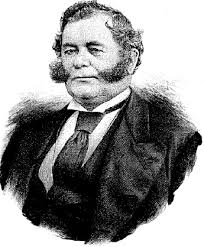 Having won a bloodless victory at Sonoma, Ide and Merritt then proceeded to declare California an independent republic. With a cotton sheet and some red paint, they constructed a makeshift flag with a crude drawing of a grizzly bear, a lone red star (a reference to the earlier Lone Star Republic of Texas) and the words “California Republic” at the bottom. From then on, the independence movement was known as the Bear Flag Revolt.
Having won a bloodless victory at Sonoma, Ide and Merritt then proceeded to declare California an independent republic. With a cotton sheet and some red paint, they constructed a makeshift flag with a crude drawing of a grizzly bear, a lone red star (a reference to the earlier Lone Star Republic of Texas) and the words “California Republic” at the bottom. From then on, the independence movement was known as the Bear Flag Revolt.
Fremont officially took command of the so-called Bear Flaggers and occupied the unguarded presidio of San Francisco on July 1. Six days later, Fremont learned that American forces under Commodore John D. Sloat had taken Monterey without a fight and officially raised the American flag over California. The United States had declared war against Mexico on May 13, 1846. This news apparently had not reached the Bear Flaggers at the time of their revolt. Since the ultimate goal of the Bear Flaggers was to make California part of the United States, they now saw little reason to preserve their “government.” Three weeks after it had been proclaimed, the California Republic quietly faded away.
In 1850, California joined the Union and the Bear Flag was officially adopted as California’s state flag in 1911.
California During Prohibition
On January 17, 1920, the 18th Amendment to the Constitution of the United States made “the manufacture, sale, or transportation of intoxicating liquors within, the importation thereof into, or the exportation thereof from the United States…for beverage purposes….” illegal. But, two little words were missing from that list: ownership, and consumption. It was those 2 words that made all the difference in the years ahead.
The Volstead Act, the body of law responsible for the enforcement of Prohibition, defined “intoxicating liquor” as any beverage containing half a percent (.5%) or more of alcohol by weight. The Act did provide few exclusions including wine for religious purposes. Catholic and Jewish religious leaders, who opposed Prohibition were quick to secure supplies of “sacramental wine” for themselves, and their congregations.
The strictly hierarchical structure of the Catholic church ensured that priests signing orders for sacramental wine were actually priests and not imposters. However, the looser structure of the Jewish religious organization, led to many bootleggers claiming to be rabbis to take advantage of the loophole in the Volstead Act.
In response, the market introduced sacramental champagne, crème de menthe, brandy, and others. Asked to rule on whether these liquors truly belonged under the sacramental wine exception, a federal judge in the District of Columbia allowed it, stating, “it is not the content of the beverage, but the purpose for which it will be used that determines whether or not it is sacramental wine.”
Another Exception: Home-Made Cider, er, Wine
Another exception to the Volstead Act allowed for the making of up to 200 gallons of non-intoxicating cider or homemade fruit juice each year. The Bureau of Internal Revenue, however, struck down the .5% definition of “intoxicating,” with regard to homemade wine in July of 1920. The Bureau stated that, “some drinks that contain more than the prescribed one-half of 1 per cent, while they may cheer, do not inebriate.” This ruling opened the door to a booming home winemaking business.
Prohibition lasted almost 14 years before the 21st Amendment repealed the 18th Amendment returning control of liquor laws to the states. The Prohibition years had a profound impact on society and American’s attitudes towards liquor. While some wine growers ripped out their vines and replaced them with apricots and other fruit trees, other growers found religion and not only survived the prohibition years, but prospered.
Georges de Latour of Beaulieu Vineyards was one such. De Latour, a Catholic, had secured connections within the Catholic church in the years prior to prohibition, to provide the sacramental wine for churches across the country. During the entirety of Prohibition, Wente Vineyards sold 100% of its harvest to de Latour to be made into sacramental wine. Beringer, Martini, and Concannon also sold to the church.
De Latour and other makers of sacramental wine did not restrict themselves to providing for the Catholic church. They also made kosher wine, and provided wine for Lutherans and the Russian Orthodox.
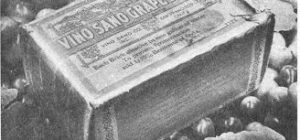 Demand for wine grapes soared. California land dedicated to grape-growing increased by 700% during the first 5 years of Prohibition. By 1928, approximately 27,900 railroad carloads of grapes left California bound for New York alone. The volume was so great that the Pennsylvania Railroad expended its Jersey City freight terminal solely to accommodate the thousands of grape-laden boxcars. Prices increased as well as volume. During the first four years of Prohibition, a ton of grapes went from a pre-Prohibition price of less than $30 to a staggering $375.
Demand for wine grapes soared. California land dedicated to grape-growing increased by 700% during the first 5 years of Prohibition. By 1928, approximately 27,900 railroad carloads of grapes left California bound for New York alone. The volume was so great that the Pennsylvania Railroad expended its Jersey City freight terminal solely to accommodate the thousands of grape-laden boxcars. Prices increased as well as volume. During the first four years of Prohibition, a ton of grapes went from a pre-Prohibition price of less than $30 to a staggering $375.
Another method of legally distributing wine grapes during Prohibition was to sell grape concentrate in the form of a solid block (about the size of a pound of butter) called a “wine brick” or “wine block”. According to the law, these bricks could be used by the consumer to make “non-intoxicating fruit juice.” In order to comply with the letter, if not the spirit, of the law, the wine bricks were sold with a warning on the label cautioning the consumer not to add yeast or sugar to the grape juice or to leave it in a cupboard for 20 days before drinking because it “might ferment and turn into wine.”
Repeal found the California wine grower eagerly tearing out the rows of hated Alicante vines and replacing them with tastier varietals. Vintners struggled to regain lost winemaking knowledge and to refill the barrels and casks with the “liquid poetry”. During the 13 years and 10 months of Prohibition, some wineries closed their doors, a few made fortunes, most did what they needed to do and just to survive.
The Path to Cannabis Legalization
Here’s a chart which shows major marijuana legalization milestones in California.
| The Poison and Pharmacy Act of 1907 | California passed the Poison and Pharmacy Act in 1907 that banned the sale of opium, cocaine, or morphine without a prescription. In 1913, cannabis was included on the list of banned drugs, making the Golden State the first to prohibit marijuana. |
|---|---|
| Marihuana Tax Act of 1937 | The Marihuana Tax Act of 1937 made the possession or transfer of marijuana illegal across the United States under federal law. Medicinal use was legal but it created an expensive fee system to tax its use. |
| California Attempts to Legalize Marijuana in 1972 | The Golden State was the first in the U.S. to independently attempt to legalize marijuana in 1972 with Proposition 19, which attempted to decriminalize marijuana possession and sale. The law failed to pass with 66.5% voting against it. |
| Berkeley Marijuana Initiative I of 1973 | Berkeley voters passed the Berkeley Marijuana Initiative I, prohibiting officers from making marijuana-related arrests unless approved by the city council first. |
| Moscone Act of 1976 | The Moscone Act in California changed possession of an ounce or less of marijuana from a felony to a misdemeanor. |
| Berkeley Marijuana Initiative II of 1979 | Berkeley voters passed an ordinance that made growing, possession, transportation and sale of marijuana the lowest priority for police. |
| Judge Rules DEA Hindered Cannabis Research in 1988 | A judge ruled that the DEA hindered cannabis research and allowed the drug to be used safely, claiming it was a therapeutic product. Later that year, researchers discovered cannabinoid receptors in the human brain that lead to a better understanding of how drugs affect the central nervous system. |
| San Francisco Recognizes Marijuana for Medicinal Use in 1992 | The Board of Supervisors in California become the first city government to recognize marijuana for its medicinal purposes. That year, the enforcement of marijuana laws became the city’s lowest priority. |
| California Voters Vote to Legalize Marijuana in 1996 | Voters in California passed Proposition 215, legalizing the use and sale of marijuana for medicinal purposes, but the law conflicted with federal statutes. |
| California Introduces Medical Research for Marijuana in 1999 | The Golden State introduces a three-year program for medical research, gearing their focus on the drug as a medical treatment. The legislation led to funding the University of California’s Center for Medicinal Cannabis Research at UC San Diego. |
| Oakland Passes Measure to Allow Taxation of Cannabis for Adults in 2005 | Oakland passes a measure to allow regulation and taxation of cannabis for adult use, making the prosecution of adults who use or possess marijuana a low priority for law enforcement. |
| Governor Schwarzenegger Passes SB 1449 in 2010 | Governor Schwarzenegger passes SB 1449, making the possession of less than an ounce of marijuana a misdemeanor and civil infraction in the state of California. |
| Oakland Approves a Citywide Plan to Cultivate Marijuana in 2010 | The city of Oakland votes to approve a citywide plan to cultivate medical marijuana in four factories. The plans were later dismissed after the Obama administration warned Oakland that they would be in violation of federal law. |
| Proposition 19 is Defeated in California in 2010 | Proposition 19 would have legalized the recreational use of marijuana for adults 21 years and older but it was defeated - 54 percent voted against it. |
| US Attorneys Prosecute Landlords Allowing Marijuana Growth in 2011 | Four U.S. attorneys for the state of California begin to prosecute property owners and landlords who rent buildings used to sell or grow marijuana. |
| Mendocino County Ends Permit Program for Medical Marijuana Growers in 2012 | Mendocino County ends its permit program (the first in the nation) to medical marijuana growers after receiving pressure form the federal government. |
| California Voters Say They Would Legalize Marijuana in 2013 | In a state poll, at least 55 percent of voters agreed they would support the legalization of marijuana. |
| California Lawmakers Set New Regulations for Medicinal Marijuana Programs in 2015 | The Golden State begins to draft new regulations for medical marijuana programs, establishing rules for growing cannabis, setting fees and licensing standards. |
| Adult Use of Marijuana Act is Approved in 2016 | Proposition 64 is approved by California voters, legalizing the recreational use of marijuana in the state. |
| Marijuana Legalization Goes into Effect in 2018 | After the approval of the Marijuana Act in 2016, weed will be legal in the state of California starting Jan. 1, 2018. |
The History of California Lifestyle
California is one of the USA’s most famous states. It’s home to iconic San Francisco and Los Angeles, Napa Valley, Sierra Nevada mountains and Yosemite National Park. Sunny California is also famed for the enviable Californian lifestyle. Take a look at our tips and experiences for living like a ‘Cali’ local.
San Francisco
California has a history of being a lifestyle pioneer. In fact, it was the colorful streets of San Francisco that gave birth to the hippie movement and the subsequent Summer of Love back in the 60s. Use your free time in San Fran to explore the historic sites of Haight Ashbury, taking pit stops in the hipster cafes and craft beer pubs.
The Central Valley
California is the USA’s most organic state. Not only do Californians love to embrace an organic diet, but Californian farmers are responsible for a large majority of the organic produce sold in America.
To get an authentic insight into the industry, visit Salinas Valley to learn about fruit and vegetable production from a Local Specialist, or head to Earthbound Organic Farms in Carmel Valley to take a tour and try out the local produce.
Wine Country
As well as organic, Californians love to keep it local with their wines. To live like a ‘Cali’ local, take a tour of California’s wine country and try out the local varieties on offer.
Create, taste and bottle your own combination of Carignane, Petite Sirah, and Zinfandel on a local family-run winery in Sonoma. Or head down to Napa to get on board the Napa Valley Wine Train for a unique wine-tasting experience.
California Weed Country
Or, enjoy the “high” life by taking a Cannabis-and-Wine Tour or by visiting a dispensary or tasting room. Some Tours will take you to cultivation sites where you can get up close and personal with the plants.
Parks and Other Outdoor Activities
When it comes to all-round well-being, California’s enormous National Parks can feed your body, mind and soul. As well as exercising your legs in the rugged National Parks, take a moment to reflect on your surroundings and take a long deep breath of fresh air. It’s not just the sheer expanse of California’s National Parks that give you a new perspective, but the enormity and beauty of the natural vistas that are around you.
Feel dwarfed by the “Land of Giants” as you walk through the Sequoia National Park, before spending the night stargazing with a naturalist as they take you on a journey through the night sky.
When visiting Yosemite, stay overnight inside the park, allowing more peace and quiet for your short stroll to Yosemite Falls. In Mammoth Lakes, head up into the mountains for a relaxing two-night stay.
Los Angeles
Los Angeles may be famous for the star-spotting and glamorous lifestyle portrayed in the movies, but L.A. dwellers are also extremely active. Californians love to get out into the great outdoors on a hike or bike ride, and L.A. has it all covered.
Are you coming to California? Check out Happy Travelers Tours for a unique and memorable experience in Wine-and-Weed Country!
Sonoma Wine Tasting
Sonoma Wine Tasting
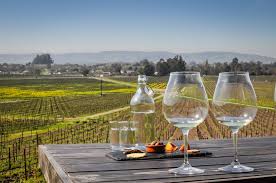 At Happy Travelers Tours we're always looking for some unique spin on the Sonoma County Lifestyle and recently we did some research to compile a list of Sonoma Wineries who still provide complimentary tastings.
At Happy Travelers Tours we're always looking for some unique spin on the Sonoma County Lifestyle and recently we did some research to compile a list of Sonoma Wineries who still provide complimentary tastings.
While the era of free wine tastings is long-gone in the Napa Valley, and a relatively recent loss in Sonoma County, you can still find a dozen or so places who'll pour you a taste without a fee.
Here's our list of free Sonoma Wine Tasting for your use:
| WINERY | COMMENTS |
|---|---|
| Highway 12 | You’ll get an informative tasting, with a background of the downtown Sonoma winery and some tips on where to stop afterward. |
| Merry Edwards | Here, wine education has always been at the forefront. It’s a serious experience with two options. The first is a 15-minute, walk-in friendly tasting of three wines — two Pinots and one Sauvignon Blanc. The second is a sit-down, in-depth tasting that requires an appointment. You’ll taste five wines: Chardonnay, four single-vineyard Pinots and the Sauvignon Blanc. This experience is designed for those who really want to learn more about the history of Russian River Valley and former Winemaker of the Year and winery owner Merry Edwards. |
| Korbel | The popular California “Champagne” house is one of very few that can call its sparkling wines Champagne. (Rules preventing wines outside of the region of Champagne from using the term came into effect after Korbel was established, and it was grandfathered in to the regulations.) The complimentary tasting is for parties smaller than 10 people without a reservation. You’ll get a free tour of the Russian River Valley property and a four-wine flight. The whole experience takes about 45 minutes. |
| Colagrossi | Owner Craig Colagrossi has a suggested tasting fee of $10. His hope is that you like the wines enough that you buy a bottle, but whether you pay for the tasting is up to you. You’ll sample four or five wines — and if you’re lucky he might also offer you a barrel tasting. |
| Rodney Strong | The winery offers complimentary tastings of the entry-level wines — the ones sold in grocery stores. Start with a self-guided tour of the winery, then sample two free pours from their Sonoma County wine collection. An upgrade to their estate wines will cost you $15. |
| Williamson Wines | At the Healdsburg tasting room at 134 Matheson St., you can walk in for a free food and wine pairing before 6 p.m. (For Williamson’s higher-end wines, visit their other tasting room at 18 Matheson St.) This includes five wines and “fridge foods” — cuisine you’d find in your refrigerator, like pickles or peanut butter. Free for groups of six or fewer. |
| Francis Ford Coppola | Free tastings at the Geyserville mega-winery are offered daily at the main floor tasting bar, however reserving a cabana by the pool will run you up to $235. |
| BobDog | You’ll glimpse panoramic views on the complimentary tour. Wine pours tend to follow what the owners are feeling, but they mostly vary between vertical tastings (tasting the same wine over different vintages) and a lineup of their Bordeaux-style wines. |
| J. Rickards Winery | This is the place to go for a full experience in Sonoma. You’ll get a flight of about five wines and a local cheese pairing. There’s also a tour of the vineyard and the option to hang around outside for a picnic. Bring your own or pay for the box lunch. Free for groups of eight or fewer. |
| Locals Tasting Room | This co-op tasting room in Geyserville hosts 10 family-owned wineries. They’ll customize a tasting for you depending on what you like or if you’re interested in a particular winery. |
| Alexander Valley | The tasting room isn’t fancy, but its outdoor area is a perfect spot to sip and enjoy some afternoon sunshine. Make sure to walk in at 11 a.m. or 2 p.m. for a complimentary cave tour. The free tasting includes your choice of five estate wines. We recommend the rosé of Sangiovese, which is gentle and dry with red cherry and mineral notes. Their Cabernet Franc is a can’t-miss, with full flavors of black cherry, pepper and herb. Free for groups of 10 or fewer. |
| A. Rafanelli | This appointment-only winery is all about exclusivity. The free tasting for parties of six or less comprises of three wines, and it usually includes their Zinfandel and their Cabernet Sauvignon. |
Happy Travelers Tours Wine-and-Weed Tour
Another way to taste some wine for free is to join one of our Wine-and-Weed Tours and come on up to the Mountain Top to enjoy wine and cannabis while we talk about the convergence of wine and cannabis and it's impact on the Sonoma County Lifestyle.
Book your Tour today or read about our other itineraries!
Marijuana and Moon Rocks
What is Marijuana? What are Moon Rocks? Are they the same?
Marijuana is a mix of dried, shredded leaves and flowers from the marijuana plant. It is often green, brown, or gray.
There are many ways to use marijuana. People can:
| Consumption Method | How To Do It |
|---|---|
| Smoke | Roll marijuana up and smoke it like a cigarette. A marijuana cigarette is called a Joint. |
| Smoke | Ground up ‘buds’ can be smoked in a marijuana pipe. |
| Smoke | A Bong is a water pipe device in which smoke passes through a chamber of water when being inhaled, cooling the smoke for a smoother inhalation. |
| Smoke | Concentrate, or “shatter” or “dab” can be smoked via an electronic device called a ‘dab rig’ which vaporizes the concentrate |
| Vape | Cannabis concentrates or oils can be ‘vaped’ using small, battery powered, vaporizers |
| Eat | Cannabis extracts, like canna-butter or cannabis infused oil and vinegars, can be added to recipes. These extracts can be psychoactive THC based or non-psychoactive CBD based. Gummies, Suckers and Chocolate are just some of the food products available with CBD infusion. |
| Drink | THC and CBD-infused beverages are available and range from flavored waters to, home-made, wines |
How Does Cannabis Make You Feel?
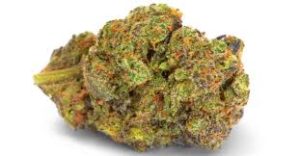 Marijuana can make you feel silly, relaxed, sleepy, and happy—or nervous and scared. It may change your senses of sight, hearing, and touch. Marijuana can make it hard to think clearly. In rare cases, some people start seeing things that are not real, called hallucinations.
Marijuana can make you feel silly, relaxed, sleepy, and happy—or nervous and scared. It may change your senses of sight, hearing, and touch. Marijuana can make it hard to think clearly. In rare cases, some people start seeing things that are not real, called hallucinations.
When you smoke weed, you might:
- get dizzy
- laugh for no reason
- have red, bloodshot eyes
- forget things that just happened
Marijuana makes you feel like time is slowing down. Minutes can feel like hours. At the same time, everyday sights, sounds, and tastes may seem really interesting or funny.
Marijuana can make you feel very hungry. You want to eat lots of junk food. Some people call this "the munchies."
People who smoke marijuana often smell like it afterwards. Marijuana smells sweeter than cigarette smoke. A person might use incense, cologne, or perfume to try to hide the smell.
If you vape, there is almost no odor during consumption and the vapor dissipates almost instantly!
Are They Talking About Marijuana?
Some slang names for marijuana are:
- Weed
- Pot
- Grass
- Herb
- Boom
- Ganja
Moon Rocks, On My!
Moon Rocks. Moon Rock Weed. Moon Rocks Molly. What the heck are people talking about? Moon Rocks isn’t really a strain but more a “mixture” of bud, keif and cannabis oil all combined to create a THC laden “super bud” designed to completely waste your day. Seriously, smoking moonrock marijuana will result in you spending the day staring out the window … even if there isn’t a window around!
 Let’s talk about Moon Rocks Molly for a minute; first, it’s not cannabis, it’s MDMA, or “molly” if you’re keeping up on your slang. This drug is still listed as a Schedule 1 controlled substance; it’s not decriminalized and is certainly not for casual consumption.
Let’s talk about Moon Rocks Molly for a minute; first, it’s not cannabis, it’s MDMA, or “molly” if you’re keeping up on your slang. This drug is still listed as a Schedule 1 controlled substance; it’s not decriminalized and is certainly not for casual consumption.
On the other hand, buying or making Moon Rock weed IS decriminalized and available for recreational use in states where cannabis consumption is legal. From the medical users point of view, smoking moon rock is just a step below smoking a dab, so, in times of extreme pain, smoking moon rock will provide relief, depending on your tolerance levels.
Which brings us to WHO should (or should not) smoke this type of marijuana – this is an extreme THC experience, sorta like the old E Ticket Rides at Disneyland. Cannabis Newbies should not start out by smoking moon rocks; they will feel that they are ‘too high’ and that might not be the experience they’re looking for. Always remember: no matter how high you are at any given time, you will always sober up and lose the high – it just takes some time!
Moon Rocks weed price can vary, but for the most part, it can be pricy.
For more information about Cannabis Strains, read our blog post California Cannabis Strains
To Book a Happy Travelers Tour, visit our Booking page or, for more information about our Tours, visit our Home page!
Marijuana Seeds in my Weed
Marijuana Seeds in my weed, should I try to grow them
We were searching the internet for content about marijuana seeds and we came on a couple of articles which talk about the concept of "bag seed" and what to do with those seeds. Bottom line, if you find a seed in your weed, you need to consider the following:
- Are the seeds Good or Bad
- Is the Strain one you like
- Are you prepared to Grow
- Is the seed Viable
- What about Germination
- Do you know about Cannabis seeds?
- Regular
- Feminized
- Auto-Flowering
Are the seeds Good or Bad?
Congratulations, you’ve found a seed. More specifically a bagseed, which is what marijuana seeds found in packaged flower are commonly called. Maybe congratulations aren’t quite in order. Depending on where it came from, who you ask, and if the seed is viable or not will affect your level of excitement.
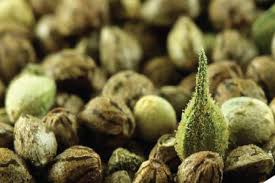 Anyone who has been smoking cannabis for some time has undoubtedly come across a bagseed. Sometimes you’ll notice a cannabis seed when grinding down some flower or you’ll see it pop, spark, and crackle as the heat of your lit bowl pops the precious kernel within.
Anyone who has been smoking cannabis for some time has undoubtedly come across a bagseed. Sometimes you’ll notice a cannabis seed when grinding down some flower or you’ll see it pop, spark, and crackle as the heat of your lit bowl pops the precious kernel within.
Bagseed: Good or Bad Weed Seeds – that is the question
If found before lighting it on fire, the first thought from excited smokers is: “Let’s grow some weed!” But before you jump in headfirst, ask yourself a few questions to help decide if it’s worth the time and energy to grow the seed.
Seeds found in finished cannabis flower can develop for a number of reasons. A nearby male plant can accidentally pollinate a flowering female. More commonly, though, they’re a sign of stress and can be attributed to high temperatures during the final stages of flowering or an exaggerated spike in climate or environment.
Seeds can also form in plants with genetic disorders or instability, like hermaphrodites—plants that develop both male and female reproductive parts. Generally these conditions are viewed as negatives, and for that reason alone, temper your expectations with any plants you start from a bagseed.
Is the Cannabis Seed You Found from Good Cannabis?
Sometimes you’ll get lucky and find a mature seed in some really nice herb. Strains like the legendary Chemdog wouldn’t be possible without adventurous smokers planting and proliferating the seeds they found in a bag of kind bud.
So don’t discount your bud just because there’s a seed or two in it. While not ideal, it could be the origins of the next great cannabis strain.
The first and most apparent question you should ask yourself is whether you enjoy the cannabis that the seed turned up in. If you don’t like the flavor, effects, or even the looks of the bud, then it’s probably not worth growing.
The second question you should ask yourself is:
Are You Ready to Grow?
Fear not! If you’re simply curious to learn how cannabis grows and less concerned with the overall outcome, you can plant a couple of bagseeds outside and see what the result are.
However, growing cannabis takes a certain level of commitment. Plants need nurturing for months in the right environment with a close eye for detail. All this takes investment. Whether it’s time, energy, or financial resources, you’ll have to commit to the whole process if you want to produce something you’re proud of.
If you’re ready for a more serious approach, make sure you have the space for a proper garden and pop the seeds to see what fruit they bear.
Is the Weed Seed Viable?
There are a few indicators that will give you a sense of whether the seed is worth germinating. Immature seeds tend to be light in color and have a soft outer shell.
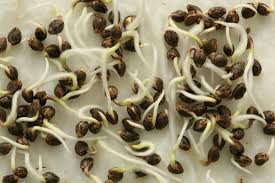 Visual signs like tiger stripes—dark stripes that resemble tiny roots or veins on a leaf—are generally good. A seed with a solid shell will withstand a little pressure when pinched between your fingers. If it crumbles or cracks, the seed will be effectively destroyed, but don’t agonize over your loss.
Visual signs like tiger stripes—dark stripes that resemble tiny roots or veins on a leaf—are generally good. A seed with a solid shell will withstand a little pressure when pinched between your fingers. If it crumbles or cracks, the seed will be effectively destroyed, but don’t agonize over your loss.
Stress on a plant and unstable environments can produce bagseeds, and often, a bagseed’s viability is questionable at best.
In some cases, even if a seed isn’t completely mature, there’s still a chance it could be viable. But often these are extremely weak, take long to develop, and express other unfavorable characteristics. Growers usually discard weak plants to free up space in their limited gardens.
You might also find a mature seed that has been physically damaged through poor handling, like rough trimming. In those cases, it probably isn’t worth the effort to try and germinate the seed.
But if the seeds you found look decent or even questionable, you might as well germinate them and see what sprouts.
Time to Germinate
Viable or not, there’s only one sure way to find out. Once you’ve decided you’re going to see what those beans can do, it’s time to germinate. Germination is the incubation period that encourages seeds to sprout and develop into a new plant.
We recommend getting the seed wet and placing into a damp paper towel. Keep the towel slightly moist and wait. Water triggers the seed to start softening the shell and letting the tap root out. Once the tap root is exposed you’re ready to put the seed into a tray and get that sprout turned into a seedling!
Even if your seed sprouts fast and grows vigorously, it has roughly a 50/50 chance of being female and producing seedless, cannabinoid-rich flowers.
Remember, once a seed germinates, the real work begins. Sexing, selecting, vegetative growth, flowering, and the eventual harvest all lie ahead.
So, let’s talk about Marijuana seeds
Cannabis seeds are considered cannabis products just like flower, edibles, and concentrates. Their legality depends on which state you live in. People living in states with adult-use legalization can buy, produce, and sell seeds within their own state, but seeds can’t cross state lines. People living in states with medical legalization can only buy seeds if they have a medical card.
Seed banks exist outside of the US and can sell them for “souvenir purposes,” but it is illegal to bring seeds into the US and Customs will seize any cannabis seeds that they find in packages or on a person.
What’s the Difference Between Regular, Feminized, and Autoflower Seeds?
- Regular Seeds
If you buy a packet of regular seeds, they’ll come with a mix of males and females. A lot of cultivators prefer to grow these because they haven’t been backcrossed—essentially inbred—as much as feminized or autoflower seeds. You’ll need to sex out the seeds once their reproductive organs show during the flowering phase and discard the males (because they don’t produce buds and will pollenate females, resulting in seeded flowers).
- Feminized Seeds
Seeds can come feminized, meaning that you can just put them in soil and start growing for buds. These seeds are guaranteed to be bud-producing females, and growing them cuts out the step of having to sex out plants and discard the males.
It also reduces the risk of having a stray male sneak into your crop—just one male can pollinate a huge crop, causing your females to focus their energies on producing seeds instead of buds.
- Autoflower Seeds
Autoflower plants change from the vegetative to flowering state with age, not the changing of their light cycle. They have a short grow-to-harvest time and can be ready to harvest in as little as 2 ½ to 3 months from when you put the seeds in the ground. The downside is that, typically, they are less potent, but autoflower seeds are great for people who want to grow cannabis but don’t want to spend a lot of time doing it.
You can learn more about Cultivation by reading our Blog Post Cannabis Cultivation Outdoors or our post Cannabis Cultivation Indoors or you can Book one of our Wine-and-Weed Tours and ask our Cultivators questions!